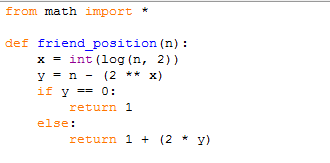In less than 30 min, I will be officially done all my assignments for my first year at UFT. And since this will most likely be my last post for this blog, I guess it should be somewhat special.
In my very first post, I talked about what computer science is really about (yup, it is more than just studying computers) and now that I am done csc165, I am quite convinced with this even more.
Computer science is about much more:
It is about logic, algorithms, problem solving (even to problems as fun as deciding your correct spot at a lunch table), patterns, rigour, planning and carrying out a plan, complexity, efficiency, understanding an argument, choosing your stance and trying to convince others about your point of view, collaboration, clear and unambiguous expression, uncomputable algorithms and computation theory, paradoxical situations, “inspirational puzzles”, meeting new people, making friends………….. just to name a few.
This course was great, my favourite this semester, I had an amazing instructor, a helpful Ta and met many great people. It helped me to think differently and look at arguments logically.
And while I am glad that I am almost done my first year at UFT, I really feel sort of unhappy that this course is coming to an end.
Of course, I still have the exam to worry about. I hope all of us do well on the exam.
Computer science is about much more:
It is about logic, algorithms, problem solving (even to problems as fun as deciding your correct spot at a lunch table), patterns, rigour, planning and carrying out a plan, complexity, efficiency, understanding an argument, choosing your stance and trying to convince others about your point of view, collaboration, clear and unambiguous expression, uncomputable algorithms and computation theory, paradoxical situations, “inspirational puzzles”, meeting new people, making friends………….. just to name a few.
This course was great, my favourite this semester, I had an amazing instructor, a helpful Ta and met many great people. It helped me to think differently and look at arguments logically.
And while I am glad that I am almost done my first year at UFT, I really feel sort of unhappy that this course is coming to an end.
Of course, I still have the exam to worry about. I hope all of us do well on the exam.
I guess: BYE for now






